
Calm Before the Storm: The ECB Takes Center Stage
Global data last week showed modest U.S. inflation and steady job gains, eurozone inflation at 2 percent despite weak PMIs, and U.K. prices rising even as employment cooled. In Asia and Oceania, China grew 5.2 percent in Q2 with a recovering PMI, Japan’s core inflation stayed above 2 percent, and Australia’s unemployment jumped to 4.3 percent. Emerging markets diverged: India’s inflation fell to a six‑year low, Nigeria’s eased further, and Brazil’s activity contracted.
Market review
USA
Last week’s data painted a picture of a U.S. economy that remains broadly resilient but faces mounting headwinds. In June, headline CPI rose 0.3 percent—the largest monthly gain since January—pushing annual inflation to 2.7 percent. Goods prices bore the brunt of early tariff pass‑through, with core goods inflation at 0.2 percent versus a six‑month average of 0.07 percent, while core services softened as travel and lodging costs eased. Because much of the tariff increase occurred only in April and May, further upside to headline inflation remains possible in coming months.
On the labour front, weekly jobless claims fell by 7,000 to 221,000 for the week ending July 12, beating forecasts and underscoring continued hiring despite broader uncertainties. Though June’s official payroll numbers are still pending, these low claims suggest firms remain reluctant to curb staffing, even as higher borrowing costs and slowing credit growth threaten interest‑sensitive sectors.
Industrial output surprised to the upside in June, rising more than expected on the back of utilities and mining gains and a modest 0.1 percent uptick in factory production. Capacity utilization rates held firm, indicating some manufacturing resilience, but persistent trade‑policy ambiguity is likely to weigh on capital‑spending plans and dampen growth later this summer.
After a sluggish start to 2025, housing starts rebounded 4.6 percent to a 1.32 million annual pace in June, driven by a multifamily revival. Building permits inched up 0.2 percent, yet single‑family starts remain near their weakest level since mid‑2023 as mortgage rates around 7 percent continue to crimp affordability and deter prospective buyers.
Consumer spending showed surprising strength, with retail sales jumping 0.6 percent in June and rising in ten of thirteen categories. However, much of that gain likely reflects price increases—especially in goods—rather than higher volumes, and services spending remains muted. This dynamic will become clearer when the personal‐income and spending report is released.
Finally, the University of Michigan’s preliminary July sentiment reading climbed to a five‑month high, fueled by better assessments of current conditions. Yet sentiment remains historically low, and consumers’ concerns about tariffs and inflation persist. With an August 1 tariff increase looming, alongside elevated financing costs, the U.S. economy appears poised between steady—if unspectacular—growth and the risk of renewed slowdown.
Eurozone
June headline and core CPI held at 2.0 percent and 2.3 percent respectively, matching ECB targets, even as energy and goods price declines offset firmer services inflation. The HCOB composite PMI hovered at 50.2—stagnation overall—with manufacturing below 50 and services just above. Germany’s ZEW Economic Sentiment jumped to 52.7, but current‑conditions confidence remained deeply negative at –59.5. Industrial production rebounded strongly in May, while producer prices stayed in double‑digit deflation. The current‑account surplus narrowed sharply. Against this backdrop, the ECB is poised to pause rate cuts in July, with any further easing likely delayed until September amid looming U.S. tariff risks.
United Kingdom
Headline inflation unexpectedly jumped to 3.6 percent in June—the highest since January 2024—driven by rising food and motor‑fuel prices and pass‑through of April’s National Insurance hikes. Core inflation also surprised on the upside at 3.7 percent, while services inflation remained sticky at 4.7 percent. Payroll figures showed a net loss of 178,000 jobs over the year to June, lifting unemployment to 4.7 percent (its highest since mid‑2021), and wage growth slowed to 5.0 percent. Together, these developments complicate the Bank of England’s outlook: stubborn price pressures argue against aggressive easing, yet softening labour markets counsel caution ahead of the anticipated 25 basis‑point cut to 4.00 percent in August.
China
Q2 GDP growth came in at 5.2 percent year‑on‑year—slightly above forecasts—propelled by a 6.8 percent rise in industrial output. Yet retail sales (4.8 percent) and fixed‑asset investment (2.8 percent) underperformed, weighed down by a property slump. The Caixin manufacturing PMI returned to expansion at 50.4, while services cooled to a nine‑month low of 50.6 amid softer domestic demand and lingering U.S. tariff risks. Much of June’s upside reflected front‑loaded exports and temporary trade‑in subsidies, which are now waning. With the August 11 tariff truce expiration looming and policymakers reluctant to unleash major fiscal stimulus, we project growth slowing to 4.7 percent in 2025.
Japan
Core CPI eased to 3.3 percent year‑on‑year in June—its weakest pace in three months—but remained above the BOJ’s 2 percent target. Broad‑based moderation was offset by a 7.2 percent spike in food prices, driven by a rice‑price surge. Seasonally adjusted month‑on‑month inflation slowed to 0.1 percent. Wholesale prices rose 2.9 percent, easing pressure on BOJ outlooks. The June Tankan survey showed a slight uptick in large‑manufacturer confidence despite tariff concerns. We expect the BOJ to hold rates at 0.5 percent in July, with any hike—currently penciled in for October—likely delayed if domestic demand remains weak.
Emerging Markets
India’s retail inflation tumbled to a six‑year low of 2.1 percent in June, prompting the RBI to hold its repo rate at 6.5 percent and forecast 3.7 percent inflation for FY 2026. Russia’s CPI cooled to 9.4 percent, but PMIs slipped into contraction, bolstering the case for an initial rate cut at the July 25 meeting. Turkey saw inflation ease slightly to 35.0 percent, with PMI‑measured factory output contracting; markets anticipate a 250 basis‑point rate cut to 43.5 percent in late July. Brazil’s IBC‑Br activity index fell 0.7 percent in May, reflecting uneven sectoral recovery, while Nigeria’s inflation eased to 22.2 percent for a third straight month.
US, Wall Street and USD Outlooks!
Next week’s U.S. economic calendar (July 21–25) promises a flurry of high‑impact releases, beginning with the Conference Board’s Leading Economic Index for June on Monday and ending with June durable‑goods orders on Friday. S&P Global’s flash manufacturing and services PMIs on Thursday will give a first read on private‑sector momentum in Q3, while home‑sales data midweek and the Chicago Fed’s National Activity Index will round out the picture of demand and growth. Interspersed throughout are a series of Federal Reserve speeches—the last public commentary ahead of the July 29–30 FOMC meeting—ensuring that every datapoint and dovish or hawkish nuance is closely parsed by markets.
The June LEI is expected to mirror May’s 0.1 percent drop to 99.0, its weakest since spring 2020. A flat or softer reading would underscore continued headwinds—tariff uncertainty and inventory adjustments—that have weighed on business sentiment and tempered hopes for an early rate cut. July’s flash PMIs follow a June composite reading of 52.1, where resilient services output masked softer factory production; next week’s preliminary figures will reveal whether supply‑chain frictions or front‑loaded inventories are denting new orders and hiring.
In housing, May existing‑home sales climbed 0.8 percent to a 4.03 million‑unit annual pace, snapping a two‑month slide but still sitting 0.7 percent below last year’s level amid near‑7 percent mortgage rates. Single‑family resales rose 1.1 percent and supply eased marginally, while multifamily sales dipped 2.7 percent. We expect June resales to slip 0.3 percent. On the new‑home front, May sales plunged 6.3 percent to 693,000 units; June may see a modest rebound to 653,000.
Friday’s durable‑goods report will test whether the remarkable 16.4 percent surge in May—driven almost entirely by a Boeing‑Qatar Airways aircraft order—was a one‑off. Stripping out transportation, orders have been flat since last September; we forecast an 11 percent decline in June as tariff‑driven distortions fade and firms rein in capital spending.
Fed speakers, including regional presidents and governors, will bookend the week, offering insights into the Fed’s data‑dependent framework and the prospects for a September rate cut versus a more cautious pause.
On Wall Street, heavyweights Tesla and Alphabet report on July 23, with a host of other large‑caps (NXP Semiconductors, Verizon, Comcast, Texas Instruments, Capital One, GE Vernova, RTX, Lockheed Martin and more) delivering results that will shape the small‑cap through mega‑cap earnings narrative. Equity futures have been buoyed by record highs in the S&P 500 and Nasdaq, but tariff risks and inventory adjustments remain key headwinds.
Technical Analysis
The Nasdaq continues its bull run, with a pivot point at 21,000 and initial support around 22,200. Although prices are reaching new highs, On‑Balance Volume has formed lower highs—a warning signal of a possible correction.
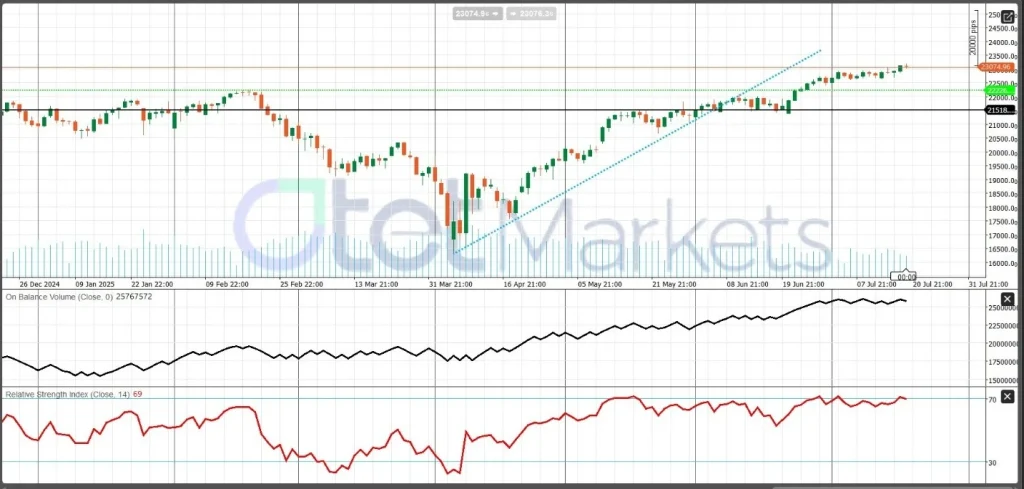
In FX markets, the dollar has steadied around DXY 98.2 after an 11 percent slide this year, as Citi shifts its near‑term outlook from bearish to neutral ahead of Fed speeches and the August 1 tariff deadline. Technical indicators point to consolidation above the 97.30 support level, with a potential rebound if negative catalysts abate.
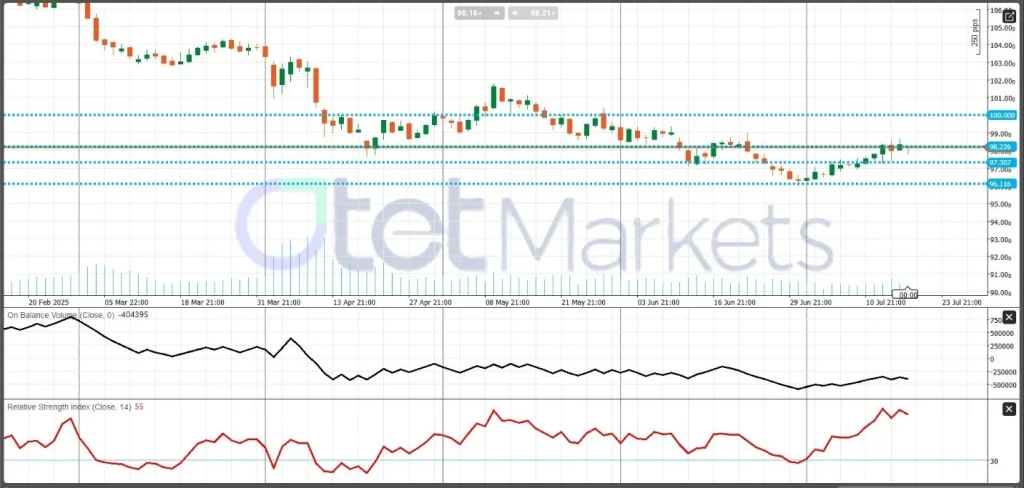
How EU economic data and ECB meeting will move the Euro
Next week’s euro‑area calendar features three high‑impact releases that will shape market expectations and policy deliberations. On Wednesday, July 23, investors will receive the European Commission’s flash Consumer Confidence Indicator alongside S&P Global and HCOB’s preliminary manufacturing and services PMIs. The following day, Thursday, July 24, the ECB Governing Council meets to announce its deposit rate—widely expected to remain at 2.00 percent—and President Lagarde will outline the bank’s near‑term outlook in a post‑decision press conference. Finally, on Friday, July 25, Germany’s Ifo Business Climate Index will offer fresh insight into sentiment in the bloc’s largest economy, following recent PMI readings that showed stagnant factory activity and only modest growth in services.
Three key considerations will dominate the week. First, the looming threat of a 30 percent U.S. tariff on EU exports—set to take effect August 1—remains the primary downside risk; markets anticipate, however, that negotiations will avert an abrupt shock. Second, the euro’s roughly 12 percent rally against the dollar this year has dampened import‑price inflation and complicates the ECB’s decision calculus. Third, election‑year trade rhetoric and geopolitical flashpoints in Ukraine and the Middle East could amplify market volatility, underscoring the need for a data‑dependent policy stance.
At its July 24 meeting, the ECB is almost certain to hold rates steady, extending its pause in the easing cycle. Governing Council members will balance stable core inflation against external headwinds—namely, currency strength and tariff risks—and all eyes will be on Lagarde’s guidance for timing any further cuts, which economists largely see arriving in September.
July’s flash PMIs will provide an early barometer of momentum: June’s composite index stood at 50.6 (manufacturing 49.5; services 50.5), and July forecasts point to a slight uptick (composite 50.8). While these readings suggest tentative stabilization, persistent global uncertainties highlight the need for caution.
On the currency front, EUR/USD closed last week near 1.1620. Technical indicators suggest limited upside, with resistance around 1.1700, support near 1.1550, and the pivot at 1.1620—levels that will be tested by next week’s data and policy cues.
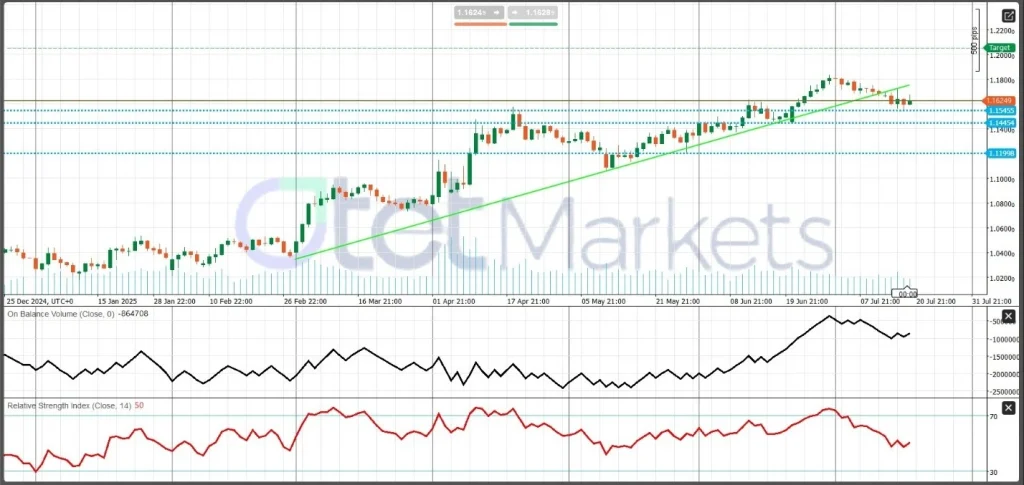
Gold Market and Outlook
Spot gold traded around $3,350 per ounce heading into the week of July 21–25, after climbing 0.4 percent on Friday amid a softer U.S. dollar and ongoing geopolitical uncertainty. Despite a modest weekly pullback, robust central‑bank and investor demand continues to support prices. Technically, gold remains in a strong uptrend, with resistance near $3,360 and support around $3,320. Key catalysts this week include U.S. flash PMIs, ECB and Fed speeches, and the looming August 1 U.S. tariff deadline.
Central banks persist in adding to their gold reserves—purchasing over 1,000 tonnes annually—underscoring long‑term institutional confidence. According to the World Gold Council, gold has rallied 26 percent in dollar terms in H1 2025 amid a range‑bound rate environment and heightened geopolitical risks. However, the Council cautions that a reduction in global risk or a strengthening dollar could weigh on prices in the medium term.
Technical Analysis
- Uptrend: Gold remains in a clear upward trend on the daily chart, with moves above $3,384 viewed as buying opportunities.
- Short‑Term Targets: $3,442 and beyond.
- Support Levels: $3,310 (50‑day moving average), $3,300, $3,260.
- Resistance Levels: $3,360, $3,380, $3,420.
- Risks: A bearish correction could test support at $3,325 before the uptrend resumes. A break below $3,105 would undermine the bullish outlook.
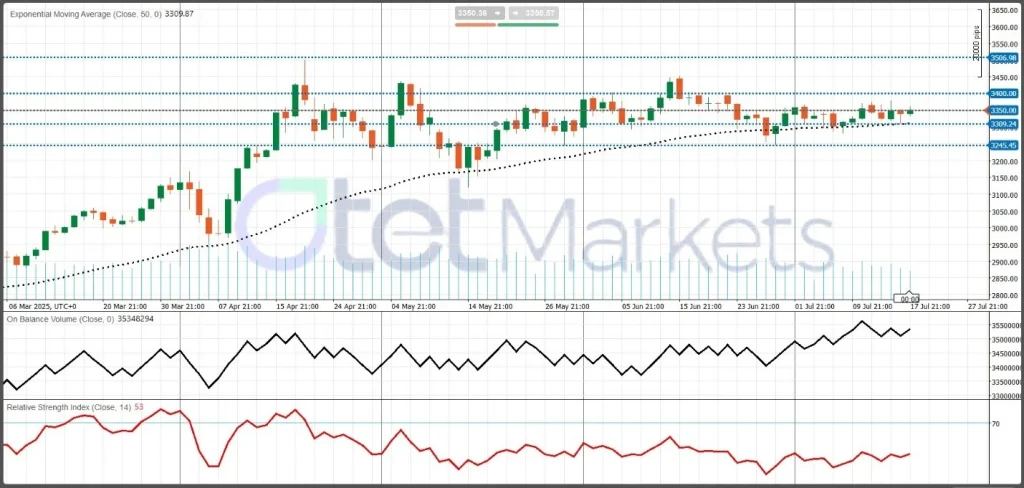
Overall, barring a surprise dollar rally or a shift in central‑bank policy, gold is likely to consolidate within this range, with the primary upside and downside levels to watch at $3,360 and $3,320, respectively.
WTI Market Condition & Weekly Outlook (July 21–25)
WTI crude is trading near $66.00 per barrel after an 8 percent year‑to‑date decline, pressured by forecasts of rising U.S. production and planned OPEC+ output increases. U.S. rig counts rose for the first time in 12 weeks—up seven rigs to 544—providing modest bullish support, though total rigs remain 7 percent below last year’s levels. Technical indicators point to a range‑bound market between $65.00 and $68.00, with key catalysts including weekly inventory reports, flash PMIs, and central‑bank speeches.
Supply Factors
- U.S. Drilling: Baker Hughes reported a seven‑rig increase to 544 rigs—the first uptick in 12 weeks—though oil‑rig activity remains near multi‑year lows.
- OPEC+ Output: The group plans to boost production by 548,000 bpd in August to regain market share.
Demand Drivers
- Goldman Sachs Forecast: Raised its H2 2025 WTI average to $63/bbl, citing tighter non‑OPEC supply and lower OECD inventories; trimmed its 2026 forecast to $52/bbl.
EIA July Short‑Term Energy Outlook (STEO)
- U.S. Production: Downgraded slightly to 13.37 million bpd in 2025 (from 13.42 million bpd), easing to 13.30 million bpd by Q4 2026.
- Price Forecasts: WTI is projected to average $65.22/bbl in 2025 and $54.82/bbl in 2026.
- Consumption: U.S. oil demand is expected to rise modestly to 20.4 million bpd in 2025, led by industrial and transport sectors.
OPEC July Monthly Oil Market Report
- Demand Growth: Maintained at +1.29 million bpd for 2025 and +1.28 million bpd for 2026, driven by resilient air travel and road mobility.
- Supply & Refining: OPEC+ output rose to 41.56 million bpd in June (up 349,000 bpd), and global refinery crude runs increased by 2.1 million bpd month‑on‑month.
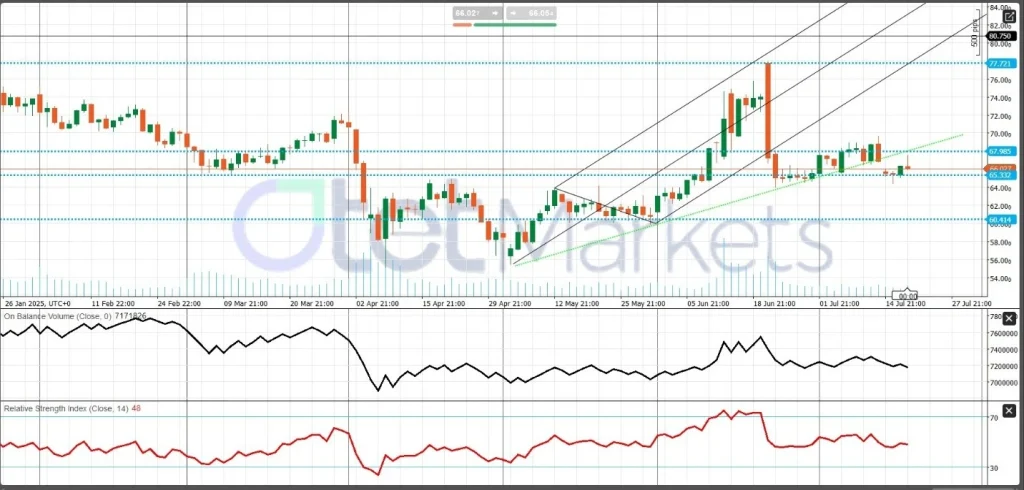
Oil remains range‑bound near $65–$68 as traders balance supportive fundamentals—tight seasonal supply, OPEC+ discipline, and healthy demand—against headwinds from unexpected U.S. inventory builds, tariff risks, and a resilient dollar. This week’s inventory data, Fed commentary, and flash PMIs will be pivotal in determining WTI’s next directional move.
Technical Range
- Resistance: $68.00 (break above opens $70.00)
- Support: $65.00 (breach risks $63.00)
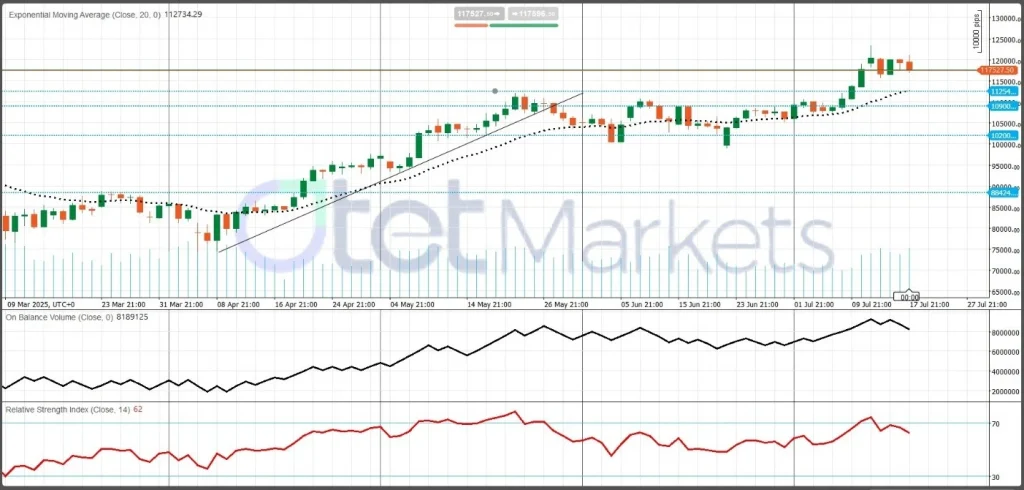
Bitcoin Market Condition & Weekly Outlook (July 21–25)
As of July 19, Bitcoin was trading around $117,750, down from a record high of $123,153.22 earlier this week. Institutional demand and new U.S. stablecoin regulations pushed prices above $120,000, but large holders quickly locked in profits, triggering a roughly 5% pullback. The total cryptocurrency market capitalization exceeded $4 trillion, highlighting growing mainstream adoption and recent legislative milestones. Year‑to‑date gains of over 26% have outpaced gold and major equity indices amid a range‑bound rate environment and ongoing geopolitical tensions. However, bearish analysts warn that momentum may falter after the surge past $122,000.
Key Drivers
- Fed Commentary: A series of Federal Reserve speeches this week will be closely watched for signals on rate‑cut timing and overall policy direction.
- Regulation: The U.S. House’s passage of stablecoin legislation—and pending Senate action—will shape the crypto regulatory landscape.
- Geopolitics: Continued EU sanctions on Russia and broader geopolitical risks are driving safe‑haven flows into Bitcoin.
Outlook
Bitcoin is likely to trade within a $110,000–$130,000 range over the coming week. Upside will hinge on bullish macroeconomic surprises or further regulatory clarity, while strong institutional support should cushion any sell‑offs. Traders should monitor U.S. economic data releases, Fed speeches, and stablecoin developments for the next directional cues.
Technical Outlook
Chartists are eyeing $140,000 as the next major resistance level, with initial support around $112,500 (the 20‑day moving average). The recent consolidation phase suggests relief from overbought conditions and a rotation into altcoins, coinciding with a slight dip in Bitcoin’s market dominance.
Share
Hot topics

Best Forex Trading Hours for Iranian Traders
The Forex market operates 24-hours a day, but clearly not every hour, equal it could even be every trading session, is profitable. There are times when the market sleeps, is...
Read more

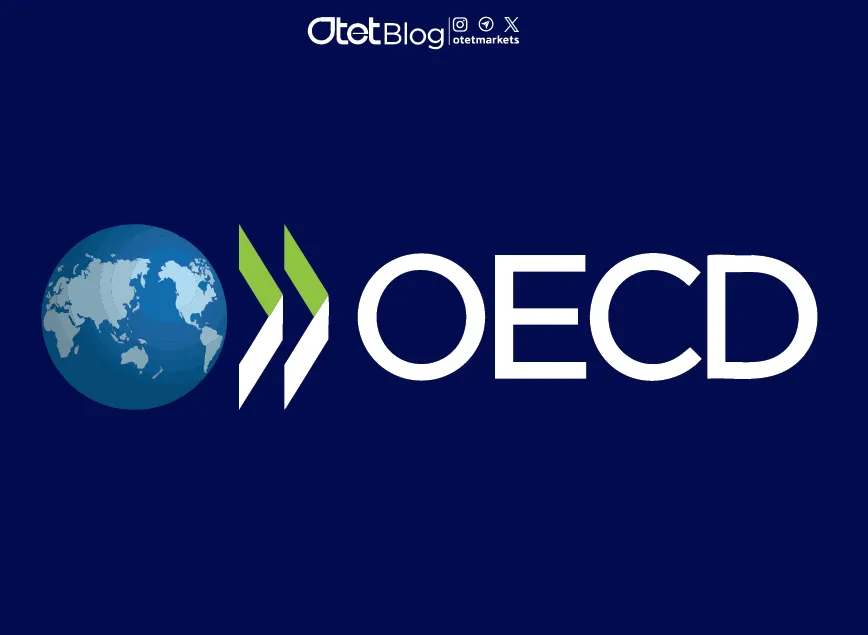
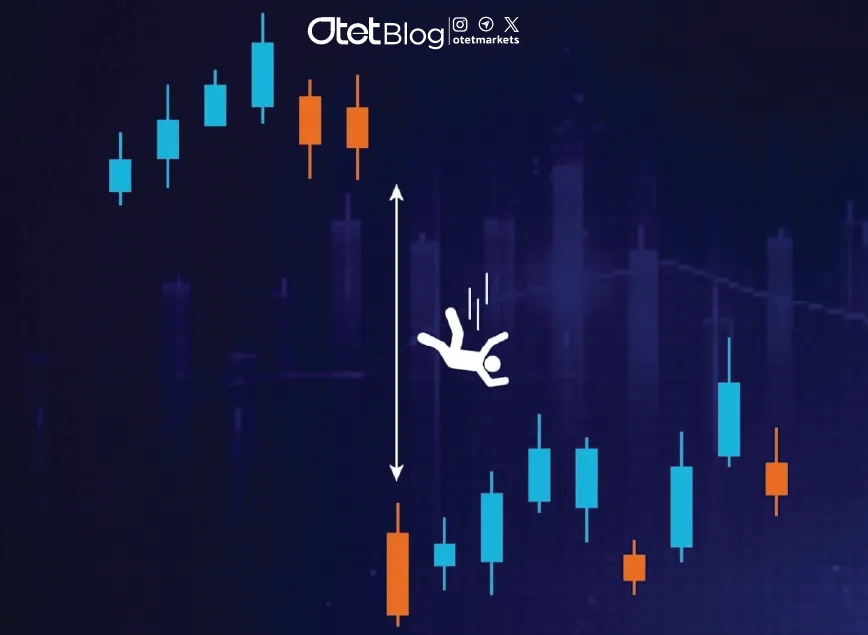

Submit comment
Your email address will not be published. Required fields are marked *